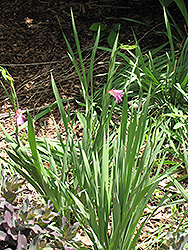Snowbank Boltonia
Boltonia asteroides 'Snowbank'
Height: 5 feet
Spread: 4 feet
Sunlight:
![]()
![]()
Hardiness Zone: 4a
Other Names: Wild Aster, False Chamomile, Starwort
Description:
A perfect choice for a border display of dazzling white, long lasting blooms; virtually smothered in beautiful daisy-like flowers; attracts hummingbirds and bees; very adaptable and hardy
Ornamental Features
Snowbank Boltonia is smothered in stunning clusters of lightly-scented white daisy flowers with yellow eyes at the ends of the stems from late summer to mid fall. The flowers are excellent for cutting. Its pointy leaves emerge light green in spring, turning grayish green in color. The foliage often turns yellow in fall.
Landscape Attributes
Snowbank Boltonia is a dense herbaceous perennial with a mounded form. Its relatively fine texture sets it apart from other garden plants with less refined foliage.
This is a relatively low maintenance plant, and should only be pruned after flowering to avoid removing any of the current season's flowers. It is a good choice for attracting bees, butterflies and hummingbirds to your yard. It has no significant negative characteristics.
Snowbank Boltonia is recommended for the following landscape applications;
- Mass Planting
- Hedges/Screening
- General Garden Use
Planting & Growing
Snowbank Boltonia will grow to be about 5 feet tall at maturity, with a spread of 4 feet. It has a low canopy with a typical clearance of 1 foot from the ground. It grows at a medium rate, and under ideal conditions can be expected to live for approximately 10 years. As an herbaceous perennial, this plant will usually die back to the crown each winter, and will regrow from the base each spring. Be careful not to disturb the crown in late winter when it may not be readily seen!
This plant does best in full sun to partial shade. It does best in average to evenly moist conditions, but will not tolerate standing water. It is not particular as to soil type or pH. It is highly tolerant of urban pollution and will even thrive in inner city environments. This is a selection of a native North American species.

